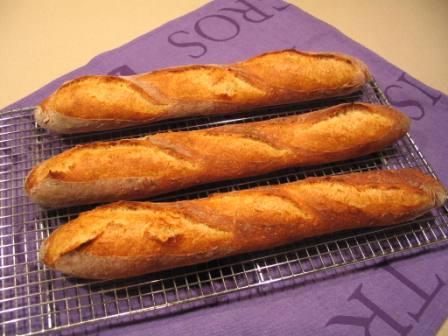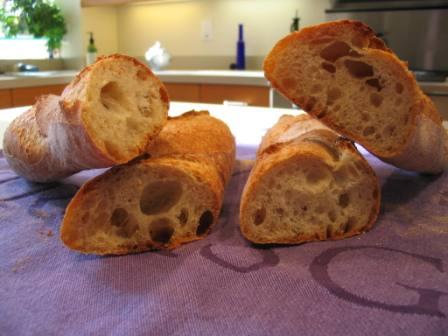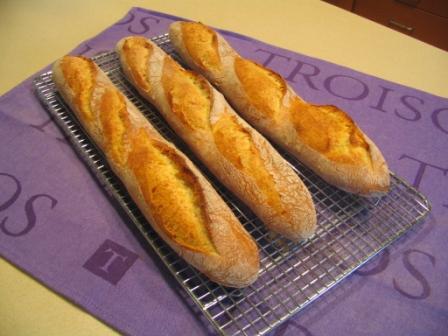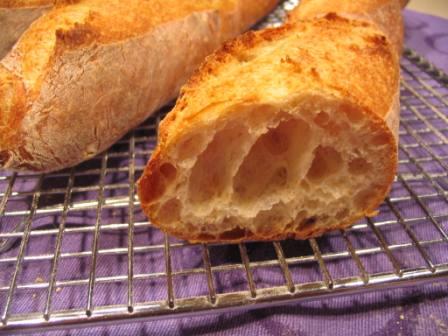DonD's blog
Eric Kayser's La Tourte de Meule
Background:
In Eric Kayser's book "100% Pain", the Foreword written by the celebrated French chef Alain Ducasse waxed poetic about Kayser's Tourte de Meule, which literally translates to "Millstone Pie" and which is basically a Country Miche made with High Extraction Organic Stone Ground Flour and a Liquid Levain.
 Eric Kayser's "La Tourte de Meule"
Eric Kayser's "La Tourte de Meule"
Baguette Tasting in Montreal
Background:
Having a number of high school friends living in Montreal, I have had the opportunity to visit this city quite a few times over the years. I have always enjoyed its cosmopolitan charm and the French influences that have permeated its history and culture especially in the area of gastronomy.
Pain Paillasse Revisited
Background
When I first saw the twisted shaped baguettes posted by Shiao-Ping on her blog, I was intrigued. Then I read the posting by Chouette22 on the Pain Paillasse by Aime Pouly and found out that it is an Artisanal Bread made in Switzerland, I was fascinated and wanted to know more about the man and his breads. I purchased Pouly's book 'Le Pain' and studied it thoroughly.
Croissants & Pains au Chocolat
Does the taste of a favorite food evoke in you indelible memories of time and places where the pleasure it has given you has put a mark on you for life?
For me, a bite into a buttery and flaky croissant and my taste memory takes me back to my childhood in Saigon where every morning, I would look forward to the familiar sound of the horn announcing the arrival of the "Bread Man" riding on his scooter with twin canvas trunks full of goodies straddling the rear seat to deliver fresh baguettes and croissants to the neighborhood houses.
Ganachaud Baguettes Experiment
I have read a lot of press about a special baguette called "La Flute Gana" made by Bernard Ganachaud, one of the pioneers of the artisanal bread revival in France during the late 70's. I have tried to follow different interpretations of Ganachaud's recipe available in some bread books without much success so I decided to experiment and develop my own interpretation of "La Flute Gana".
Baguettes au Levain
This past weekend, I made a batch of Baguettes au Levain based on the recipe that Janedo had adapted from the Anis Bouabsa formula. This is my third try at this recipe and each time I tweaked it a little bit to correct some aspects that did not turned out to my liking. This time the loaves turned out pretty good with nice oven spring and airy crumb. The crust had nice golden color with small blisters, thin and crackly and deep caramel flavor. The taste was not sour but is rich and sweet with a slight tang.
The formula I used consists of:



 I found this site a couple of months ago and have been following some fascinating posts and the great exchange of information among the members.
I found this site a couple of months ago and have been following some fascinating posts and the great exchange of information among the members.